the place where Paleontology and Paleoanthropology meets Philately
Angola
Fossils, dinosaurs and prehistoric animals, Charles Darwin, Natural History Museum on stamps and postmarks of Angola
| << previous country | back to index | next country >> |
Contents:
- Country overview
- Philately of Angola
- Official stamps of Angola related to Paleontology
- Other stamps of Angola to consider
- Postmarks of Angola related to Paleontology
- References
Angola, officially the Republic of Angola, is a country in Southern Africa.
It bordered by Namibia to the south, the Democratic Republic of the Congo to the north, Zambia to the east, and the Atlantic Ocean to west. The exclave province of Cabinda has borders with the Republic of the Congo and the Democratic Republic of the Congo. The capital and largest city is Luanda.
The Republic of Angola, on the west coast of southern Africa, is home to the arid Namibe desert region and has abundant fossiliferous outcrops. By the Late Cretaceous period, Angola’s present-day coastline had already formed, and Africa had essentially become isolated from other continental landmasses, meaning that inhabitant species were able to be further endemically specialized into their own unique paleobiology.
Although its territory has been inhabited since the Paleolithic Era, modern Angola started as a Portuguese colony. The colony for much of the past few centuries was limited to coastal settlements and trading posts.
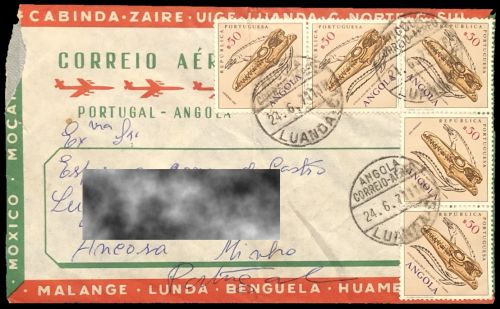 |
| Regular letter from Angola, with stamps of Angolasaurus from "Fossils and Minerals" set from 1970, sent to Portugal in 1971 |
In the 19th century, European settlers slowly and hesitantly began to establish themselves in the interior. As a Portuguese colony, Angola did not encompass its present borders until the early 20th century, following resistance by groups such as the Cuamato, the Kwanyama and the Mbunda.
Independence was achieved in 1975 after a protracted war of liberation. That same year, Angola descended into an intense civil war that lasted until 2002. It has since become a relatively stable unitary presidential republic. [R1]
A colony of Portugal since the 16th century, Angola was part of the Portuguese mail service. The first stamp of independent Angola was a 1.50-escudo value issued on 11 November 1975; it depicting a hand holding a rifle aloft, in front of a star. Initially the stamp program was conservative, with 20-30 stamps per year, but starting in the mid-1990s, large numbers of designs began to come out each year, eventually joined by adhesive labels inscribed "Angola" but not authorized by postal authorities and not valid for postage. [R2] At the end of 2018 Angola became a client of Stamperija, who start to produce hundreds of stamps a year.
Official stamps of Angola related to Paleontology: dinosaurs and other prehistoric animals, fossils, Charles Darwin
| 31.10.1970 "Fossils and Minerals" | 16.08.1994 "Dinosaurs" | 28.12.1998 "Dinosaurs" |
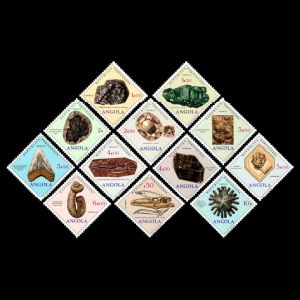 |
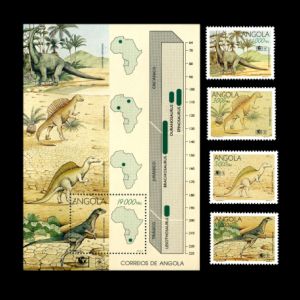 |
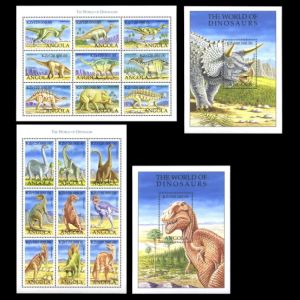 |
| 28.12.1998 "Dinosaurs" | 10.12.2018 "Dinosaurs and minerals" | |
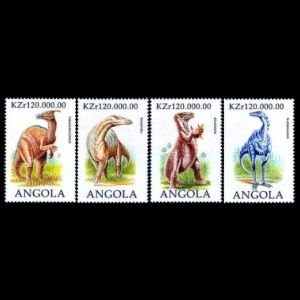 |
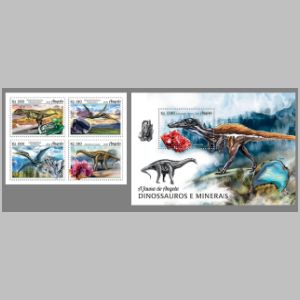 |
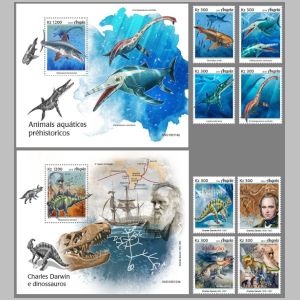 |
Other stamps of Angola to consider: Natural History Museum
| 20.02.1990 "Architecture" [O1] | 23.09.1999 "Ships" [O2] | |
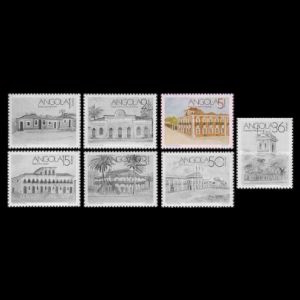 |
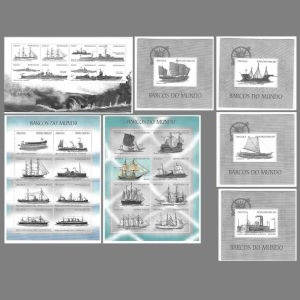 |
|
[O1] The stamp with face value 5KZ shows National Museum of Anthropology.
The museum consists of 14 rooms spread over two floors which house over 6000 traditional pieces, including farm implements, hunting and fishing items, iron foundry, pottery, jewelry, musical instruments, women's rights memorabilia and photographs of the Khoisan people.
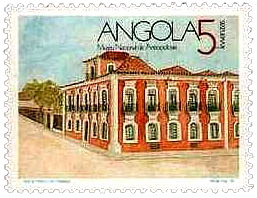
|
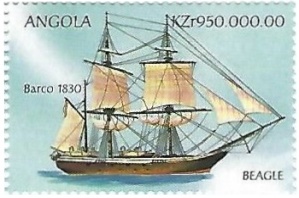
|
| National Museum of Anthropology, Angola 1990, MiNr. 783, Soott: 765 | HMS Beagle, Angola 199, MiNr. 1382, Soott: 1088c |
[O2] One of the 28 stamps of the set shows HMS Beagle.
HMS Beagle was a Cherokee-class 10-gun brig-sloop of the Royal Navy, one of more than 100 ships of this class. On the second voyage a young naturalist named Charles Darwin was on board; the pivotal role this round the world voyage played in forming his scientific theories made Beagle one of the most famous ships in history. Darwin had kept a diary of his experiences, and rewrote this as the book titled Journal and Remarks, published in 1839 as the third volume of the official account of the expedition. This travelogue and scientific journal was widely popular, and was reprinted many times with various titles, becoming known as The Voyage of the Beagle. This diary is where Darwin drew most of the ideas for his publications. Darwin attributes his first real training in natural history to his voyage on the Beagle. [R4]
Postmarks of Angola related to Paleontology: dinosaurs
Legend is here| 16.08.1994 "Dinosaurs" [FDC] [PM1] | ||
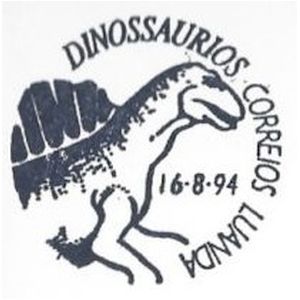 |
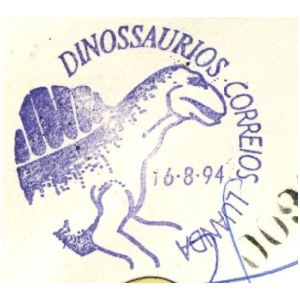 |
|
Notes:
[PM1] The same design of commemorative postmark, but in different colors: black and blue.
References:
- [R1] Angola: Wikipedia, WikiTravel, FlagCounter, SCI News,
- [R2] Postal History and Philately of Angola:
Wikipedia,
Links to official website of the Post Authority, stamp catalog and a list of new stamps of Angola are here . - [R3] National Museum of Anthropology: Wikipedia.
- [R4] HMS_Beagle: Wikipedia
Acknowledgements:
Many thanks to Dr. Peter Voice from Department of Geological and Environmental Sciences, Western Michigan University, for the draft page review and his valuable comments.
| << previous country | back to index | next country >> |